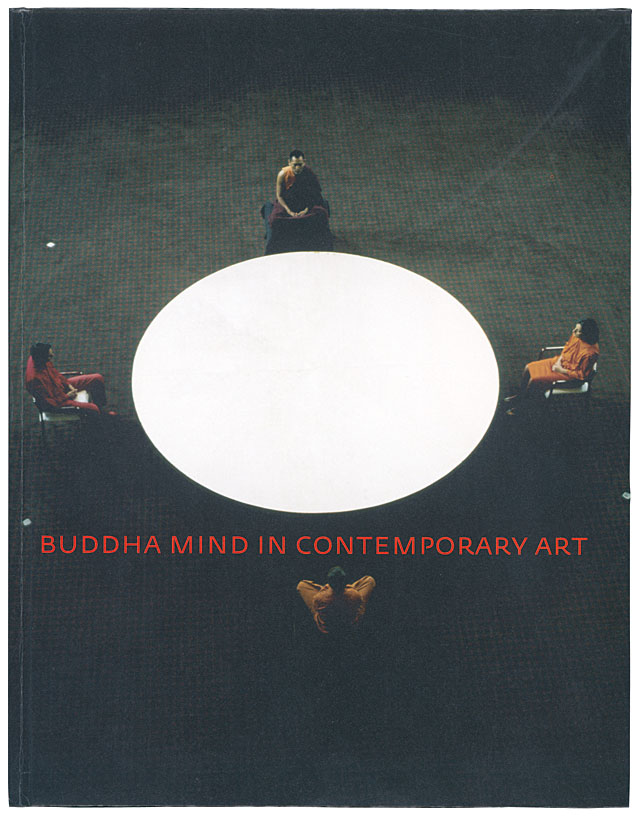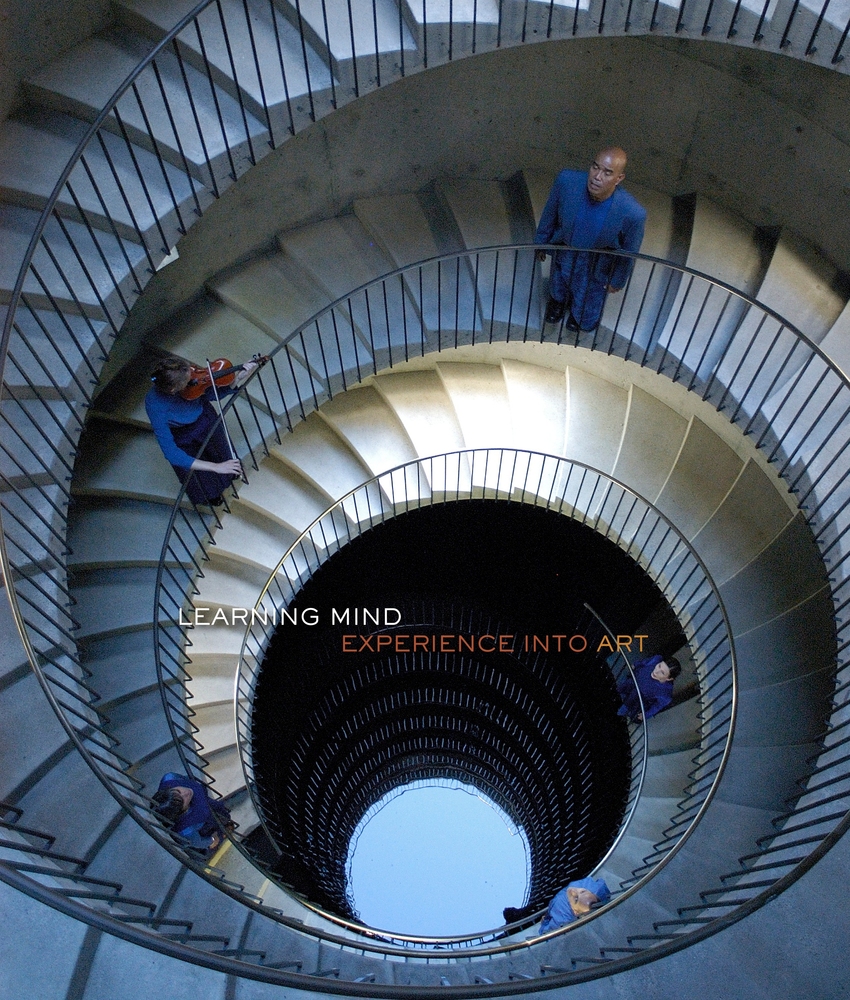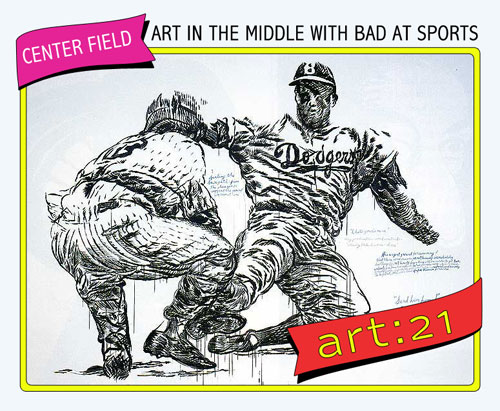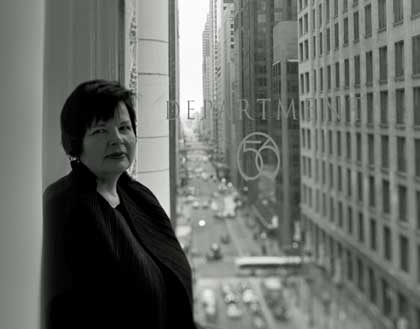Mary Jane Jacob has long been established in the world of contemporary art. As a pivotal figure in socially engaged practice, she pioneered new ideas about public art, and the artists’ relationship to an audience. She continues to curate, teach and write about unconventional forms of aesthetic experience, forever probing the bounds of our expectations.
Since 2004 she has been editing an on-going series of books on the subject of Buddhism and its relationship to contemporary art. Over the course of the following conversation we discuss the development of this interest and the potential insight a Buddhist framework might afford art’s function in society.

"Buddha Mind in Contemporary Art," Jacquelynn Baas (Editor) and Mary Jane Jacob (Editor), University of California Press, 2004.
Caroline Picard: “Buddha Mind in Contemporary Art” and “Learning Mind: Experience into Art” are two collections of rich, varied essays and interviews that examine the relationship between Buddhism and contemporary art practice. How did you conceive of that project?
Mary Jane Jacob: In one way this all came about quite accidentally—a happy accident, as in John Cage’s terms—when I was asked to advise on a show about Buddhism. The invitation, I believe, was actually to help imagine how to undertake a large collaborative program. But in preparation, putting a toe into the subject of Buddhism and art, I found there was a lot there that resonated with the intention of my public projects (things I did outside the museum context and which involved collaboration) and which was consistent with my speculative processes of curating.
But then they asked to get their organizational work rolling, and I found that if I put my whole self into this subject, there were many things about Buddhism that helped explain the nature of artmaking and art-experiencing. Moreover, I felt that in seeking to do a show on this subject, those who had brought me in had both an opportunity and necessity to devise a form to match the content. Well, they weren’t ready for that; this show was just one on their season’s roster. But this experience turned me on to Buddhism.
I was thinking about structure for the subject, a structure that could hold the content, and most of all, a structure that was open and could allow for creative thinking to happen collaboratively, for personal insights, and for art to be imagined. Eventually I would find that this open space—cultivating an open mind—was not just about thinking in an unprejudiced way (important as that is), but to be open so as to have energy and clarity. This is what Buddhist meditation practice affords.
So I brought others into the conversation, especially Jacquelynn Baas, who became my co-creator and co-producer of a research program: “Awake: Art, Buddhism, and the Dimensions of Consciousness.” Comprised of eight retreats, each session was a full program; each program got us, and the 50 persons who joined us, deeper into the subject, intellectually and by actually experiencing it. Through the research of “Awake,” a program of learning-by-doing, doing programs and enabling conversations, we were practicing what we were seeking to study: how the mind in meditation (the monk) is like the mind in creation (the artist) and the mind in recreation (the viewer). And by curating programs and conversations, not keeping the research closed and hermetic—by being open—we were led to unexpected, accidental places that bore fruit. At the same time, all along the way, we were creating outcomes—events, lectures, writings—real products we could share. It wasn’t a matter of telling the audience to wait for the show or culminating thing, and then add educational programs; that can be such an overload and also is not open, does not allow for input and exchange. Instead this was a formative and fluid, continually dynamic process. And in curating process, I was listening to it along the way for what it could reveal. But what I didn’t curate was a show. To me it didn’t seem right to go for the blockbuster (though “Awake” supported and connected to many other shows). The culminating outcome became the Buddha Mind book in 2004.
The next book, Learning Mind (2009), coincided with me moving into the Exhibitions area at the School of the Art Institute of Chicago [SAIC], which I’d joined in 2000 as a part-time faculty in Sculpture. I was continuing to put into practice what I had learned through “Awake,” and continuing to learn by doing this took the form of classes and student projects, artists’ lectures and engagements, symposia and workshops… Then by cultivating these occasions—during the process and after in reflection—the table of contents of this next book with Baas emerged. While some essays were added to round out the book, the core came from these hands-on moments at the School, and the direction was always shaped in dialogue with artists. The Buddhist aspect wasn’t so overt as in the first volume, but it still possessed some of those wisdoms that resonated with contemporary art—mindfulness and experience, interdependence and coexistence, generosity and collaboration—which drove my work, which could be found present in the artists’ work, and which affected audiences and participants in experience.
The third book—who knew there’d be a third book?—started from a very different place. Then as head of the SAIC Exhibitions Department in 2008, I was thinking: What can the Art Institute of Chicago’s Modern Wing mean for SAIC? What does modern mean today and in Chicago? How is it that we still define our society as modern? This was a big subject and we needed to get outside of ourselves institutionally, so I looked for collaborators and found a perfect partner in Justine Jentes at the Mies van der Rohe Society at Illinois Institute of Technology. This subject didn’t involve Buddhism (or so I thought), but it followed a similar process of talking and programming that I had long employed to speculate and collaborate, and which I found to be consistent with cultivating a Buddhist open mind.
The theme I focused on within modernism, and that I found spoke best through this process and which I felt needed to be revealed again was: the value of individual creativity and the development of the self in order to better society. Projects with classes, lectures, and a myriad of methods to probe ideas and turn our everyday work into creative work ensued. If there was an endpoint, it wasn’t a show—the exhibitions we did were a form of research—but the book that will be released in June 2012 is called Chicago Makes Modern: How Creative Minds Shaped Society. (Its working title had been Modern Mind.) And the Buddhism part: well, you’ll have to read it for yourself, but I’d say the focus, underscored by a deep and multi-faceted look at László Moholy-Nagy, is permeated by an ethos of creativity with responsibility. Understanding that the world depends on what we do, and that we often do wrong, we have enormous capacity to think in new and well-directed ways. It is a story of interdependence and interconnection.

"Learning Mind: Experience into Art," Jacquelynn Baas (Editor) and Mary Jane Jacob (Editor), University of California Press, 2010.
CP: What has it been like working with different authors on this subject?
MJJ: In all these programs and their corresponding books, it is a group process. Not a fixed collaboration, but a roaming discussion to which some, by chance, offer insight or accidental remarks that trigger a thought or direction, and others who are steady partners for a project or the whole process. So many of the authors, the voices you find in these books, we engaged in the larger process.
The process, for me, is always organic, so the books were not fully structured at the outset. In the past, in museums and by some foundations, I was criticized for taking an organic approach (that’s why I don’t work in museums anymore). But I think now we, as a culture, understand organic in another way: it’s natural and living; it is also responsive, and in the process things can grow or wither; it all depends on the conditions. So I have to be in a space that allows things not-yet-known to come to fruition. In fact, I see my role as one of curating process. I know artists need this space, too, and that is also my aim as a curator. And I have learned that is what students need. So the lesson of the Buddhist open mind led me to understand my role as a curator as one of making open space.
CP: Among other things, the books examine the liminal context surrounding art: the space of anticipatory aesthetic experience, a kind of non-center which then parallels the Buddhist non-center of self. I am really interested in how you came upon that particular parallel and what it has been like to sort of fuse a Buddhist filter with a contemporary art experience.
MJJ: It is interesting you speak of liminal. One of our participants in “Awake,” artist Hirokazu Kosaka who collaborated on a work called From the Veranda, spoke of the veranda as a transitional space, a space-between-spaces, a position on both sides of a boundary, a third space. I think finding this space between is very important to undertaking creative processes for ourselves and certainly in a collaboration with others. But it means working, we might say, in suspension. To move a process, we need freedom to roam. So process needs a safe space. We talk about the necessity of failure; that’s true, but that’s not the same thing I am talking about here. Failure implies a right or wrong answer, a solution that will work or not. I am speaking about musings and dreams, passing thoughts and ah-ha moments, conversations that seem to go nowhere but might come back to us and lead the way, tangents and accidents that actually propel process.
The art experience is like this. Haven’t you (even as someone well-versed in contemporary art) not understood a work of art, found it mystifying, blank, disliked it, and then later found a way into the work and even come to find it dear to you? If we don’t leave space for evolution, for a change, if we don’t dwell for a time in a liminal space of not-knowing, we can’t grow.
This interview continues on Bad at Sports’s blog; click here to read more.






Pingback: Mary Jane Jacob | The Lantern Daily